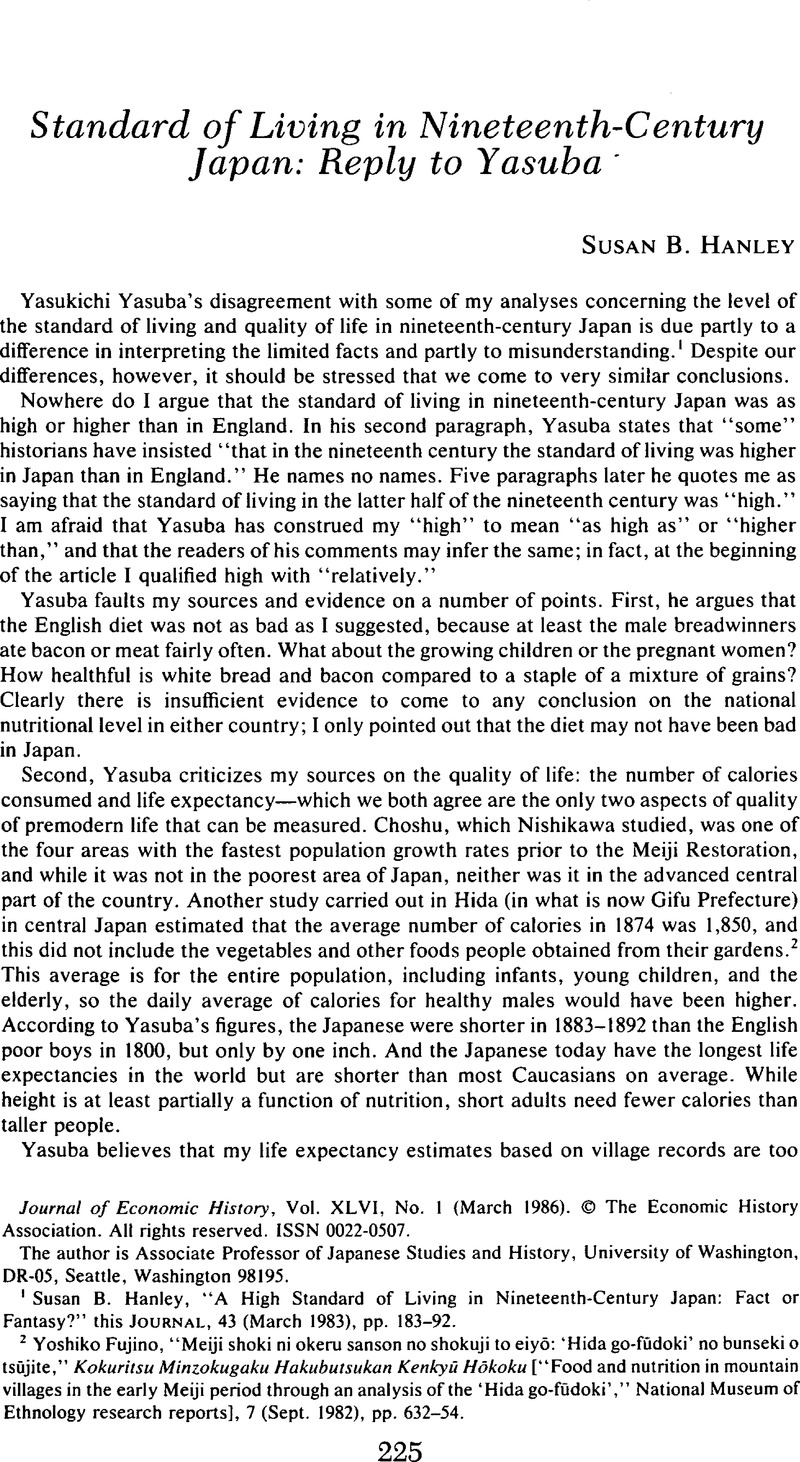Article contents
Standard of Living in Nineteenth-Century Japan: Reply to Yasuba
Published online by Cambridge University Press: 03 March 2009
Abstract

- Type
- Notes and Discussion
- Information
- Copyright
- Copyright © The Economic History Association 1986
References
1 Hanley, Susan B., “A Hight Standard of Living in Nineteenth-Century Japan: Fact or Fantasy?” this Journal, 43 (03 1983), pp. 183–92.Google Scholar
2 Fujino, Yoshiko, “Meiji shoki ni okeru sanson no shokuji to eiyō: ‘Hida go-fūdoki’ no bunseki o tsūjite,” Kokuristu Minzokugaku Hakubutsukan Kenkyū Hōkoku [“Food and nutrition in mountain villages in the early Meiji period through an enalysis of the ‘Hida go-fūdoki’,” National Museum of Ethonology research reports], 7 (Sept. 1982), pp. 632–54.Google Scholar
3 See Hanley, Susan B. and Yamamura, Kozo, Economic and Demographic Change in Preindustrial Japan, 1600–1868 (Princeton, 1977), table on pp. 294–95: “Life Expectancy for Sample Areas in Tokugawa Japan.”Google Scholar
4 Ibid., table on p. 222: “Life Expectancy Estimates for Fujito and Nishikata.” I calculated these estimates from the original village records.Google Scholar
- 4
- Cited by




